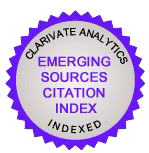Идея бессмертия в романе «Преступление и наказание»
Palabras clave:
the idea of immortality, reincarnation, the true religiosity, “A Writer’s Diary”, the absolute perfection of man, a religious doctrine of FichteResumen
In Dostoevsky’s early work there is a concept of “higher personalities” capable of dominating other people and destiny; the writer borrowed it from German Romanticism. It may seem that the novel “Crime and Punishment” is written in connection with the fact that Dostoevsky parted with this idea. However, in “A Writer’s Diary” for 1876 there is a similar conception of the “higher types”, of people who rise above ordinary people, “living animal life”, and have a special meaning in history. But now Dostoevsky believes that the real “higher personalities” are truly religious personalities who correctly understand the idea of immortality. In this regard, it can be argued that the novel “Crime and Punishment” aims not to deny the theory of the existence of “higher personalities”, but to refute its misinterpretation. Raskolnikov, the protagonist of the novel, must understand that a person becomes a “higher personality” not because of power or wealth, but by accepting genuine faith associated with a correct understanding of the idea of immortality. The meaning of this idea in the novel is expressed, on the one hand, with the help of the story of the resurrection of Lazarus and, on the other hand, with the help of Svidrigailov’s judgment of “other worlds”; it corresponds to the concept of reincarnation, which is present in the teachings of many European philosophers (J. Bruno, Leibniz, Kant, Fichte), its meaning is that a person will live an infinite number of lives, like life on earth. Dostoevsky probably borrowed this idea from the late religious teachings of Fichte, which was popular in the circle of N. Stankevich and had a strong influence on the views of V. Belinsky.Descargas
Descargas
Publicado
Cómo citar
Número
Sección
Licencia
Los autores conservan los derechos de autor sobre sus trabajos y garantizan a la revista el derecho de ser la primera publicación del mismo. Los artículos se publican bajo la licencia Creative Commons Atribución-NoComercial 4.0 Internacional (CC BY-NC-SA 4.0), lo que permite a los lectores y otros investigadores copiar, redistribuir, remezclar, transformar y construir a partir del material, siempre que se respeten las condiciones establecidas.












